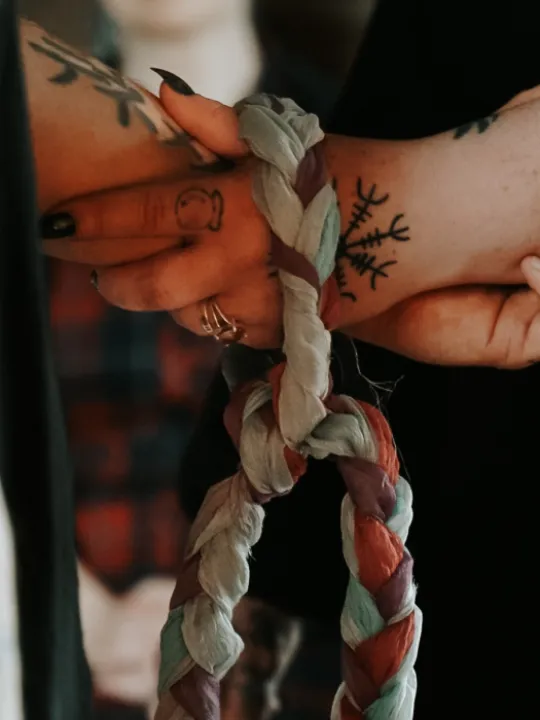Handfasting ceremonies & Hand-tying rituals in Modern Weddings
In a world where wedding traditions often evolve with the times, there's a timeless and romantic ceremony that's been making a resurgence in recent years: handfasting ceremonies. Rooted in ancient customs and steeped in symbolism, handfasting adds a touch of history and symbolic meaning to modern weddings, capturing the hearts of couples looking to infuse their special day with deeper connections.
A Glimpse into History
While its exact origins are difficult to trace, handfasting was notably practised in Celtic and Norse cultures. In Celtic tradition, handfasting was a temporary betrothal, where couples would commit to each other for a year and a day before deciding whether to formalise their union. In Norse mythology, the tying of knots symbolised the binding of two souls in love and unity.
Over time, handfasting evolved and found its place in Christian weddings in Scotland and Ireland, where it was recognised as a legitimate form of marriage until the 18th century. Although it fell out of favour with legal authorities, handfasting persisted as a meaningful ceremony within certain communities, and its symbolism has endured through the centuries.
Resurgence in Modern Times
In recent years, there has been a notable resurgence in hand-tying rituals. Couples are increasingly drawn to the idea of incorporating ancient traditions into their weddings, seeking rituals that speak to their values and beliefs. Hand-tying offers a beautiful way to symbolise the binding of two individuals in love and commitment, regardless of their cultural background or religious affiliation.
Moreover, hand-tying rituals resonate with couples who are looking to personalise their wedding experience. Unlike more conventional rituals, hand-tying allows for a degree of creativity and customisation. Couples can choose the colours, materials, and words that hold personal significance, making each ceremony unique and deeply meaningful.
The key difference between handfasting and hand-tying lies in their cultural origins and historical context. Handfasting is deeply rooted in Celtic tradition and has specific historical significance within that culture, whereas hand-tying may encompass similar rituals from different cultural or religious backgrounds.
Incorporating Hand-tying into Your Wedding Ceremony
If you're considering a hand-tying ritual in your wedding ceremony, here are a few tips to help you incorporate this beautiful tradition into your special day:
Consult with your celebrant: Discuss your desire to include a hand-tying ritual with your celebrant to ensure that it aligns with your overall wedding vision.
Choose meaningful materials: Select cords or ribbons that hold personal significance to you and your partner. Consider using colours that represent your shared values or cultural heritage.
Craft your vows: Decide on the vows or blessings you wish to exchange during the hand-tying ritual. You may choose to recite traditional vows or write your own to express your love and commitment.
Make it your own: Feel free to customise the ceremony to reflect your unique relationship. Incorporate readings and music that hold personal significance, making the hand-tying ritual a true reflection of your love story.
As you embark on this journey of love and commitment, consider embracing this timeless tradition. By weaving together the threads of ancient customs with the fabric of modern romance, you'll create a wedding ceremony that is both deeply meaningful and undeniably beautiful. In the act of binding your hands together, you'll not only unite your hearts but also honour the rich tapestry of love that has transcended time and culture for centuries.





